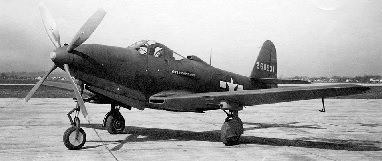
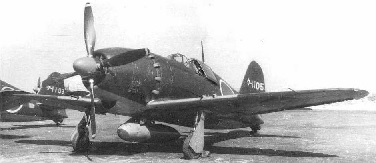 The update is now live---== UPDATE FL2065: COBRA KAI ==---
The update is now live---== UPDATE FL2065: COBRA KAI ==---By: Robert & Grumpy
All made possible by: Bcamel (creator of the program used to model the airplanes), and Idunno (who has shared a vast amount of aerodynamical knowledge)
--= P-39 Airacobra series =--Full rehaul of the P-39D, P-400 and P-39Q flightmodels. See further down for details.
--= J2M Raiden (Thunderbolt), "Jack" series =--Full rehaul of the J2M2 and J2M3 flightmodels. See further down for details.
--= I-16 =--The flightmodel is now set to use SAE system by default since the cockpit gauges do not use the metric system.
--= N1K1-J =--Stall speed reduced by 2 mph, was discovered to be to high. Military power at Bst1 and WEP at Bst2 now have a maximum of 60 min and 15 min total usage per sortie (3600 sec and 900 sec). This to simulate the Methanol injection tank capacity. Bst1 and Bst2 are still limited to 30 min and 1 min stints respectively before engine overheat.
--= Ki-84 =--Military power at Bst1 and WEP at Bst2 now have a maximum of 60 min and 15 min total usage per sortie (3600 sec and 900 sec). This to simulate the Methanol injection tank capacity. Bst1 and Bst2 are still limited to 30 min and 1 min stints respectively before engine overheat.
---== THE BELL P-39 AIRACOBRA SERIES FULL REHAUL ==---The Bell P-39 saw combat at nearly all fronts of the war. While the RAF and USAAF were not impressed with it due to it's poor high altitude performance, owing to the lack of a supercharger, the Russians loved the Airacobra as an air-to-air fighter in the low altitude fighting environment of the Russian/German front. The P-39 is an unconventional fighter in that it has the Allison V-1710 engine installed behind the pilot. This allows for a quite narrow nose shape, causing lower drag than normal and allowing for a higher top speed. The armament is heavy with several machineguns and a massive 37 mm cannon in the nose. This cannon can bring down any fighter in a few hits but has a slow rate of fire, making it hard to hit a fast maneuvering target. The P-39 has a very good dive speed and can turn decently but should avoid a tail chase against nimbler early/mid war era opponents. The controls are responsive at all speeds, with only the roll rate suffering a bit at higher velocities. While being relatively heavy for it's era, like most American WW2 fighters, the Airacobra is well armored and can take more hits than normal planes of it's size. With the engine in the back it is quite vulnerable to engine damage though. The best traits of the Airacobras is that they are overall quite decent in most respects and have an impressive top speed at low altitudes for the dates they enter the war. The P-39 pilot should generally strive to bring the enemies below 10000 ft, keep a high speed boom n zoom approach, work with wingman tactics and avoid taking the fight at high altitudes.
--= P-39D =--The P-39D entered combat in early 1942, powered by the Allison V-1710-35 engine with a maximum WEP 56" Hg output of 1470 hp at sea level. This fighter can run with a Fw 190A-1 below 5000 ft and is very competitive close to sea level, although it's engine chokes above 14000 ft and it gets outclassed by most fighters at high altitudes.
--= P-400 =--The P-400 was the export version and is very similar to the P-39D but with a 20 mm cannon replacing the 37 mm cannon. The difference in armament makes it around 170 lb lighter than the USAAF version.
--= P-39Q =--Delivery of the P-39Q to combat units started in late 1943 and this version has the Allison V-1710-85 engine, which is a bit weaker at low altitudes but has a 3000 ft higher FTH (full throttle height). Furthermore the P-39Q carries less fuel, 87 gal vs 120 gal, and as such is lighter than the P-39D. It also has several aerodynamical improvements which gives it a higher top speed than it's predecessors and this Airacobra version can run with most 1943-1944 fighters down low. For it's era it can turn quite well. Even though it's high altitude performance is slightly improved compared to the P-39D, the P-39Q rapidly loses power above 17000 ft.
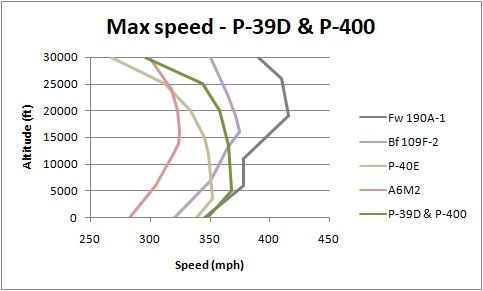


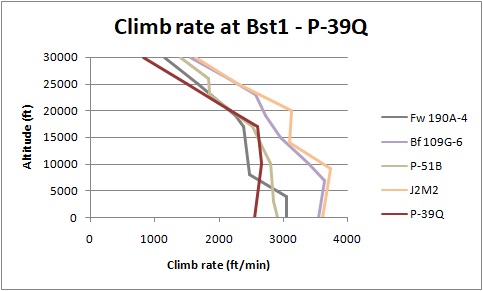
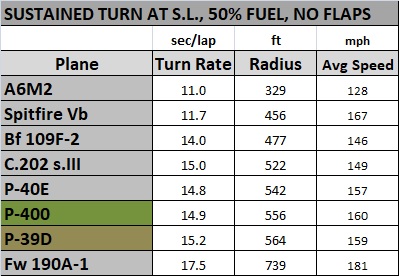
 ---== THE MITSUBISHI J2M RAIDEN (THUNDERBOLT), "JACK" SERIES FULL REHAUL ==---
---== THE MITSUBISHI J2M RAIDEN (THUNDERBOLT), "JACK" SERIES FULL REHAUL ==---The Mitsubishi J2M2 entered combat in June 1944. It was a new more advanced fighter, designed by Jiro Horikoshi, the same man that earlier had designed the Mitsubishi A6M Zero. It was a formidable opponent when it arrived, but the Japanese army pilots were often fresh and lacked proper training, and the J2M Kasei 23a engine proved very difficult to maintain for the ground crews. The Japanese pilots were also outnumbered by more than 1:4 numbers at the time the J2M arrived and as potent as this fighter was, it had all the odds against it from the get go. That being said a fully functional J2M Raiden with a good pilot behind the stick is definitely a very competitive fighter, and fairly similar in performance to the Ki-84 and the N1K1. While American late war fighters will out run it, the Raiden easily out turns and out climbs them. While it is a lightweight late war fighter, the stall speed is fairly high. The controls also become heavy with increasing airspeed. Thanks to it's raw power/weight ratio though it is a great turner in a low n slow dogfight. The armament is also quite good and it can pack a punch. The J2M pilot really needs to save the WEP for crucial moments though, since the engine problems it suffered means the J2M will quickly overheat if run at to high manifold pressures. Most late war opponents will want to apply boom n zoom tactics against the J2M, while the Raiden pilot usually wants to make it a turn fight, depending on the opponent.
--= J2M2 =--Powered by the Mitsubishi MK4R-A Kasei 23a engine, the Raiden has an impressive max output of 2000 hp at 6000 ft. This WEP output is however only available for 1 minute before the engine temperature gets to high, and at military power the engine will produce 1740 hp at 9200 ft. It is decently armed by 2x 7.7 mm MG's in the nose, and 2x 20 mm cannons in the wings. It also has pilot back armor and windscreen armor, allowing it's pilot to engage bombers without having to worry about a single machinegun bullet hitting the cockpit.
--= J2M3 =--Very similar to the previous version, but more heavily armed with 4x 20 mm cannons in the wings. This Raiden can pack a good punch and is effective against both fighters and bombers. The additional wing cannons do have a negative impact on the roll rate.
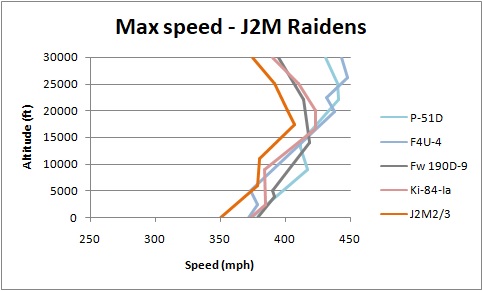

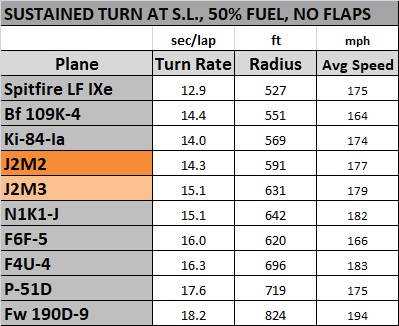
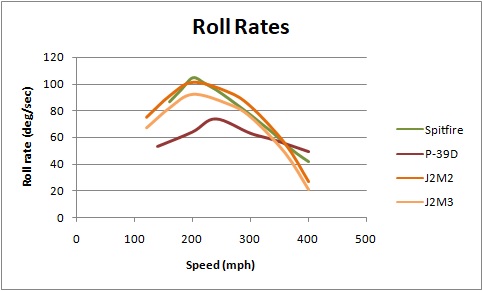
<S> and Happy New Year!
/Robert






